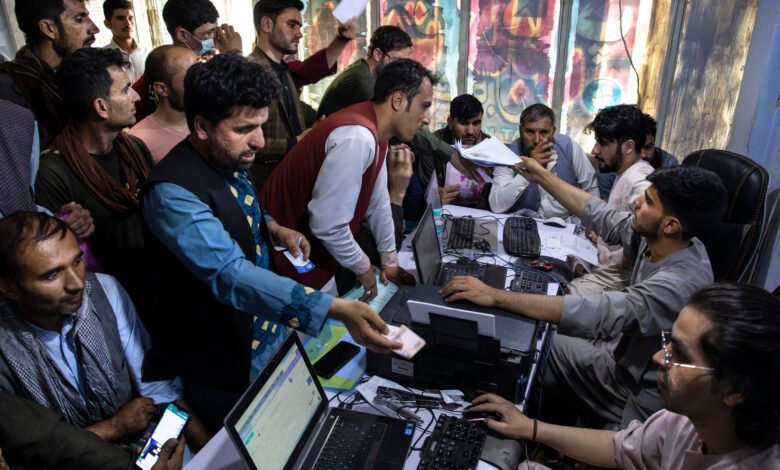You Won’t Believe the Shocking Details of Trump’s Latest Travel Ban!

Understanding the Recently Proposed Travel Ban by Donald Trump
The landscape of U.S. immigration policy has seen immense changes over the past few years, with various administrations proposing and implementing their own travel restrictions. In recent news, former President Donald Trump has reintroduced a travel ban that has reignited debates on national security, immigration, and humanitarian considerations. This post aims to provide an in-depth understanding of Trump’s newly proposed travel ban, its implications, and the reactions surrounding it.
Background: The Original Travel Ban
The original travel ban, which was introduced shortly after Trump took office in 2017, restricted entry into the United States from several predominantly Muslim countries. The administration cited national security concerns and the need to prevent terrorism as key reasons for the ban. This policy faced significant backlash, both domestically and internationally, raising questions about discrimination and human rights. After several legal battles, the Supreme Court upheld a revised version of the ban in 2018. However, the contentious nature of this policy continued to influence immigration debates throughout Trump’s presidency.
The New Proposal: Key Elements of the Latest Ban
Now in 2025, former President Trump has announced a new travel ban which echoes themes of the original policy. The updated version targets countries that have been categorized as ‘high-risk’ in terms of terrorism or lack adequate vetting standards for travelers. While specifics about the countries included in this latest travel ban are still emerging, the central tenets remain consistent with previous policies:
- Designation of High-Risk Countries: Countries that fall under the new ban will likely include nations that have been previously identified in earlier iterations. This could encompass nations in the Middle East, North Africa, and possibly parts of Asia.
- Impact on Visa Applicants: The travel ban will further complicate the visa application process for individuals from these nations. Applicants may face heightened scrutiny and additional hurdles to enter the U.S.
- National Security Justifications: The Trump administration is expected to leverage national security arguments to justify the travel ban, emphasizing the need to safeguard American citizens from potential threats.
- Duration and Scope: While details on the duration of the ban remain unclear, it could mirror previous versions in imposing indefinite restrictions until deemable security improvements are noted in designated countries.
Political Reactions: Support and Opposition to the Ban
As anticipated, the announcement of Trump’s proposed travel ban has drawn polarized reactions across the political spectrum. Supporters argue that this measure is essential for preserving national security and addressing immigration issues. They contend that it is reasonable for the U.S. to safeguard its borders, particularly in a time marked by global instability.
On the other hand, opponents view this travel ban as discriminatory and an infringement on the rights of individuals from specific nations. Civil rights groups have been vocal in their disapproval, emphasizing the humanitarian implications of restricting entry from war-torn regions. They argue that such policies create undue harm to those seeking refuge and exacerbate racial tensions both within the U.S. and internationally.
Public Sentiment and its Implications
The societal response to travel bans has been complex, often reflecting broader discussions about immigration in America. A significant portion of the American populace remains divided on the issue, with some supporting tight immigration controls to enhance security, while others advocate for more compassionate policies that align with the U.S. ethos of being a sanctuary for those in need.
Moreover, public opinion will likely play a crucial role in influencing whether this proposed travel ban will gain traction in the current political climate. As the 2024 presidential election approaches, candidates on both sides may utilize their stances on immigration as a litmus test for potential voters. Consequently, understanding how this policy resonates with the electorate will be vital for any candidate looking to position themselves effectively.
Legal Considerations and Challenges
Much like the original travel ban, Trump’s new proposal is expected to face considerable legal challenges. Civil advocacy organizations are already preparing to contest the legality of the ban, citing precedents set by previous rulings against discriminatory immigration policies. The courts will likely play a significant role in determining whether the ban can withstand scrutiny under constitutional principles and humanitarian regulations.
Furthermore, the legal landscape surrounding immigration policy has shifted since the earlier version of the ban. Legal experts note that increased judicial activism and a more aware public may lead to stronger challenges against the proposed travel restrictions this time around.
The Humanitarian Perspective
The humanitarian implications of Trump’s travel ban cannot be overstated. As the global refugee crisis continues to worsen, individuals fleeing violence, persecution, or dire economic circumstances face increasingly limited options for safe haven. Organizations dedicated to human rights and refugee assistance are expected to vehemently oppose the ban, arguing that it contradicts fundamental American values of compassion and support for the oppressed.
Additionally, many individuals and families affected by the ban may already be in the process of relocating to the U.S., having been granted asylum or holding valid visas. The abrupt re-imposition of restrictions could lead to dire consequences, including further displacement and instability for those individuals and their loved ones.
Future Developments: What’s Next?
As the political landscape continues to evolve, the fate of Trump’s new travel ban remains uncertain. Stakeholders on all sides are closely monitoring developments, particularly as potential presidential candidates begin to formulate their immigration policy platforms ahead of the upcoming election. The outcome of the ban could significantly influence public opinion, the legal battle, and broader immigration reform debates in the United States.
In the coming months, we can anticipate heightened discussions surrounding immigration policy, as both supporters and detractors of the travel ban mobilize to advocate for their perspectives. Legislative action, grassroots campaigns, and public opinion polls will all play critical roles in shaping the future of U.S. immigration policy and the treatment of individuals from high-risk countries.
Conclusion
Trump’s newly proposed travel ban is poised to reignite national discourse on immigration, national security, and humanitarian values. As debates unfold, it is essential for citizens to remain informed and engaged, considering both sides of the argument and the human stories behind the policies. The coming months will be crucial as the nation navigates through this contentious issue, an endeavor which will undoubtedly have lasting impacts on the landscape of immigration in the United States.
Summary
- The new travel ban proposed by Donald Trump draws from earlier versions in restricting entry from ‘high-risk’ countries.
- Supporters cite national security arguments, while opponents highlight humanitarian concerns and potential discrimination.
- Public sentiment is divided, reflecting broader immigration issues within U.S. society.
- Legal challenges are anticipated, with civil rights organizations preparing to contest the ban.
- The humanitarian perspective stresses the consequences for individuals seeking refuge from violence and persecution.
- Future developments surrounding the ban will significantly impact immigration policy and the upcoming presidential election.





